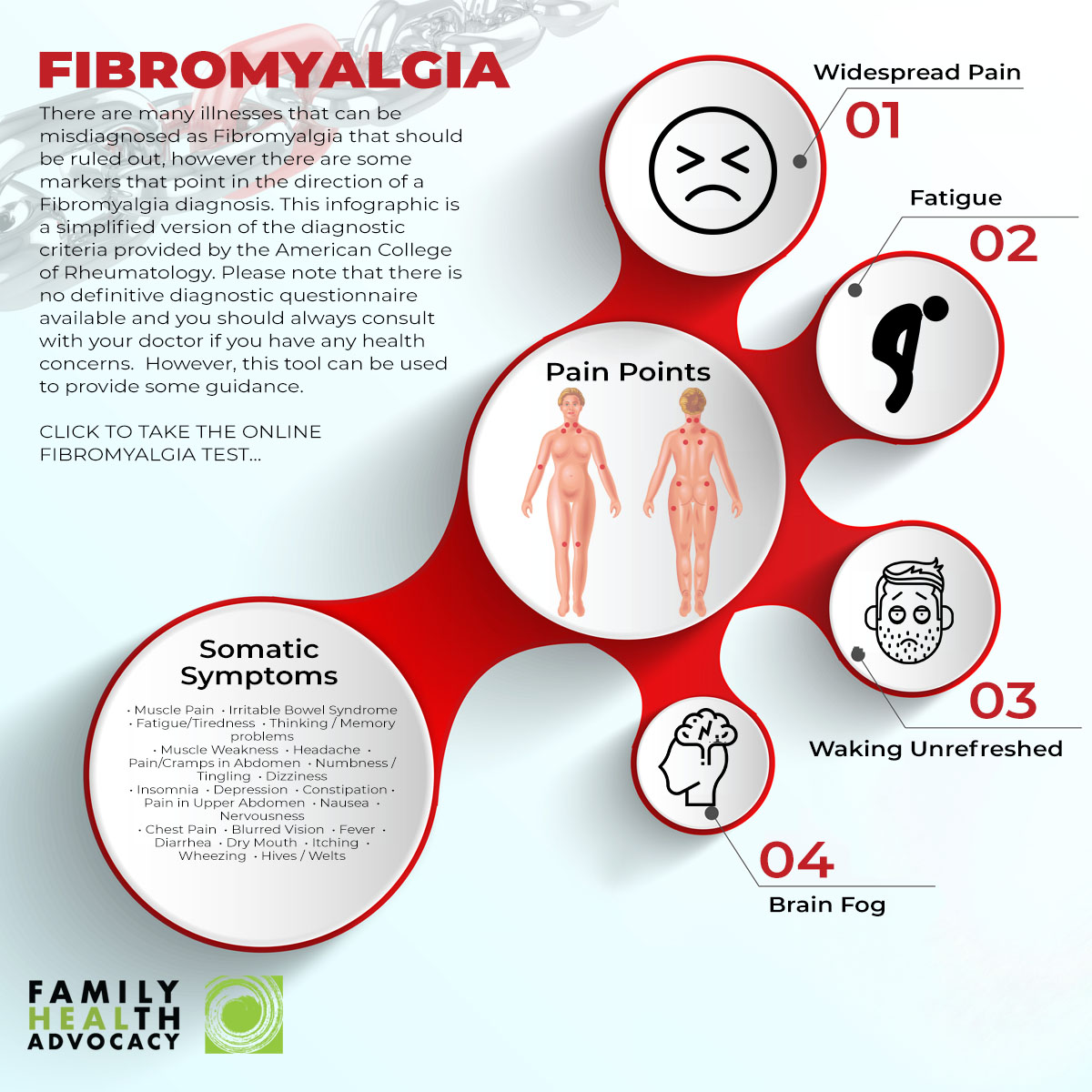You’ve probably heard the term fibromyalgia before. Maybe you’ve experienced the symptoms, received a diagnosis or know someone who has. Maybe you’ve heard about it from a friend or have even wondered if it’s possible that you have it. I’m a firm believer in natural health, so if any of the above sounds like you then you must try the following tips.
Click here to take our online fibromyalgia test.
What Is Fibromyalgia?
Let’s start by clarifying what fibromyalgia means. Fibromyalgia is a medical diagnosis. It is used to describe a certain set of symptoms. These symptoms can include;
- Pain throughout the body
- Increased sensitivity
- Fatigue
- Low energy
- Poor sleep
- Digestive issues
- Brain fog
- Lack of motivation
As you may be able to tell, these symptoms are quite vague and someone diagnosed with fibromyalgia may not have all these symptoms or may have other symptoms that are not on the list.
Fibromyalgia is known as a diagnosis of exclusion. This basically means that there is no specific test for it and every other relevant test has come back negative. That leaves us with a diagnosis of fibromyalgia and a person who overall feels quite unwell and unable to accomplish their daily goals.
What Causes Fibromyalgia?
It seems to be different for everyone. There is a lot of research going into this area and many theories and ideas into the causes and triggers of fibromyalgia are being investigated.
Theories range from changes in pain signalling pathways in the nervous system, to genetic variations, hormonal imbalances, and immune system changes. And, while each person is different, fibromyalgia often seems to be linked with stress and inflammation (1).
Naturopathic Approach For Natural Health?
Before we get into my naturopathic approach to fibromyalgia, I’d like to make an important distinction.
As a naturopath, I don’t treat fibromyalgia. I do, however, treat patients who may be experiencing symptoms that fit with a fibromyalgia diagnosis.
I make this distinction, not to be confusing, but because I find it can be too easy to focus on a diagnosis. Especially one as frustrating as fibromyalgia and lose sight of the unique person behind the diagnosis. That being said, here is my approach to helping patients who may be experiencing symptoms of fibromyalgia get their health back on track.
Natural Health Steps To Achieve Relief

1. Address The Stress
The symptoms of fibromyalgia are usually brought on by a stressful life event (1). Whether it was a traumatic experience or a flu that never seemed to go away, it is important to address and process any unresolved emotions around that experience.
Daily life stress also seems to make all of the symptoms of fibromyalgia worse so finding ways to manage and better cope with stress is so important. There are many tools that we use as Naturopaths to help manage stress. These tools range from;
- Botanicals/herbs to help mediate the stress response
- Acupuncture
- Meditation
- Hydrotherapy
- Gentle massage
Also, it can even be as simple as doing one thing a day that brings you joy. That last one gets written down on my prescription pad often!
It is important to work with a healthcare professional to form your own unique toolkit to help you best manage your stress.
2. Diet & Nutrition
As previously mentioned, inflammation tends to play a large role in fibromyalgia. There are a lot of ways to reduce inflammation with diet. There are anti-inflammatory diets, intermittent fasting, and even specific foods that can help reduce inflammation. This is where it becomes important to work with a Naturopath to come up with dietary habits that work best for you.

3. Address Sleep
There has been research to show abnormal sleeping patterns in people diagnosed with fibromyalgia (2). Checking in with your sleep patterns and practicing good sleep hygiene can help to reduce symptoms of fibromyalgia. Herbs, acupuncture, nutrition, and exercise can be useful tools in getting sleep back on track as well.
4. Rest, Rest, Rest
I say this three times because it is so important and many struggle with taking time to rest. It can be hard to accept not being able to do everything you could do before. However, it is important to listen to your body and take the time to rest. This rest time is important for recovery but also in re-focusing and re-establishing some of your health and overall life goals.

5. Exercise
Everyone is different. However, I often find people who have been diagnosed with fibromyalgia really benefit from restorative type exercises. Things that involve gentle movement like;
All of these help get the body moving and blood flowing without being too strenuous for someone who is already feeling depleted.
And there you have it, some areas to look into with your Naturopath if you are experiencing symptoms of fibromyalgia. Please feel free to reach out if you have any questions.
References
Felicia is a Naturopathic Doctor whose own healthcare experiences lead her to discover the benefits of naturopathic medicine. She earned her Bachelor of Science degree in 2013 at McMaster University, majoring in Biology & Psychology and completed an Honours thesis in behavioural neuroscience, investigating emotional regulation and mood disorders in adolescents. She then went on to earn her Doctor of Naturopathy degree at the Canadian College of Naturopathic Medicine in Toronto. In 2017, in her 4th year of post-graduate study, she completed a clinical internship at the Robert Schad Naturopathic Clinic, which included a pediatric-focused shift, a placement in the Queen West Community Health Centre, as well as a global clinical preceptorship in India.
Felicia’s Vision
Felicia aims to share knowledge and experiences gained on her own journey to help others on their health journeys. Gentle curiosity guides her practice and much time is spent in visits exploring symptoms and making connections to discover their root cause. Nutritional and lifestyle counseling are an important part of every treatment. Other tools Felicia uses to help ease symptoms and guide the healing process may include: acupuncture, botanical/plant medicine, homeopathy, and hydrotherapy. She also loves food and gardening and believes both are among the most powerful medicines.





